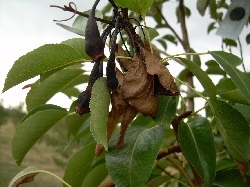
Our most accessed articles from the year covered a wide range of topics. Daniel Pletzer and Helge Weingart looked at the role ofefflux pumps in fireblight resistance to plant antimicrobials. Co-infections were the subject of this article by Gerhard Walzl and colleagues who studied the host response to infection with the helminthTrichuris muris, alongside the intracellular bacteriumm Mycobacterium bovis. Thorsten Stoeck and colleaguesinvestigatedanaerobic nitrate metabolism in the fungus Aspergillus terreusisolated in the Arabian Sea.Gadi Borkow took a more clinical approach with this article on the biocidal properties of copper oxide impregnated non-porous solid surfaces. Meanwhile Kazuya Watanabe and colleagues identified genes playing a role of the extracellular electron transfer activities of Shewanella oneidensis.
Clinical microbiology did especially well in the social media world (as measured by Altmetrics). Jonathan W Betts and David W Wareham published work on the antibacterial effects of curcumin, in combination with epigallocatechin gallate, on Acinetobacter baumannii. The probiotic effects of lactobacilli strains on Pseudomonas aeruginosa was the subject of this work by Gwenaelle Le Blay and colleagues. Laura Piddock and colleagues used functional genomics to study the spread of an antibiotic resistance plasmid. Finally Mark Osborn and colleagues bucked the clinical trend with this article on bacterial colonization of plastics in costal sediments which was summarized in this piece by the University of Sheffield.
 It’s always nice to see which articles were built upon by others and our most cited articles (to date) of 2014 were as follows. Paul Keim and colleagues studied the high prevalence of Coxiella burnetii, the causative agent of Q fever, in US milk. The hyperexpression of α-hemolysin, mediating enhanced virulence, in community-associated methicillin-resistantStaphylococcus aureus (MRSA) was the subject of this article by Benjamin P Howden and colleagues. Last but by no means least, Sam Dukan and colleagues investigated the ‘resuscitation’ of ‘viable but non culturable’ Legionella pneumophila isolates.
It’s always nice to see which articles were built upon by others and our most cited articles (to date) of 2014 were as follows. Paul Keim and colleagues studied the high prevalence of Coxiella burnetii, the causative agent of Q fever, in US milk. The hyperexpression of α-hemolysin, mediating enhanced virulence, in community-associated methicillin-resistantStaphylococcus aureus (MRSA) was the subject of this article by Benjamin P Howden and colleagues. Last but by no means least, Sam Dukan and colleagues investigated the ‘resuscitation’ of ‘viable but non culturable’ Legionella pneumophila isolates.
Comments